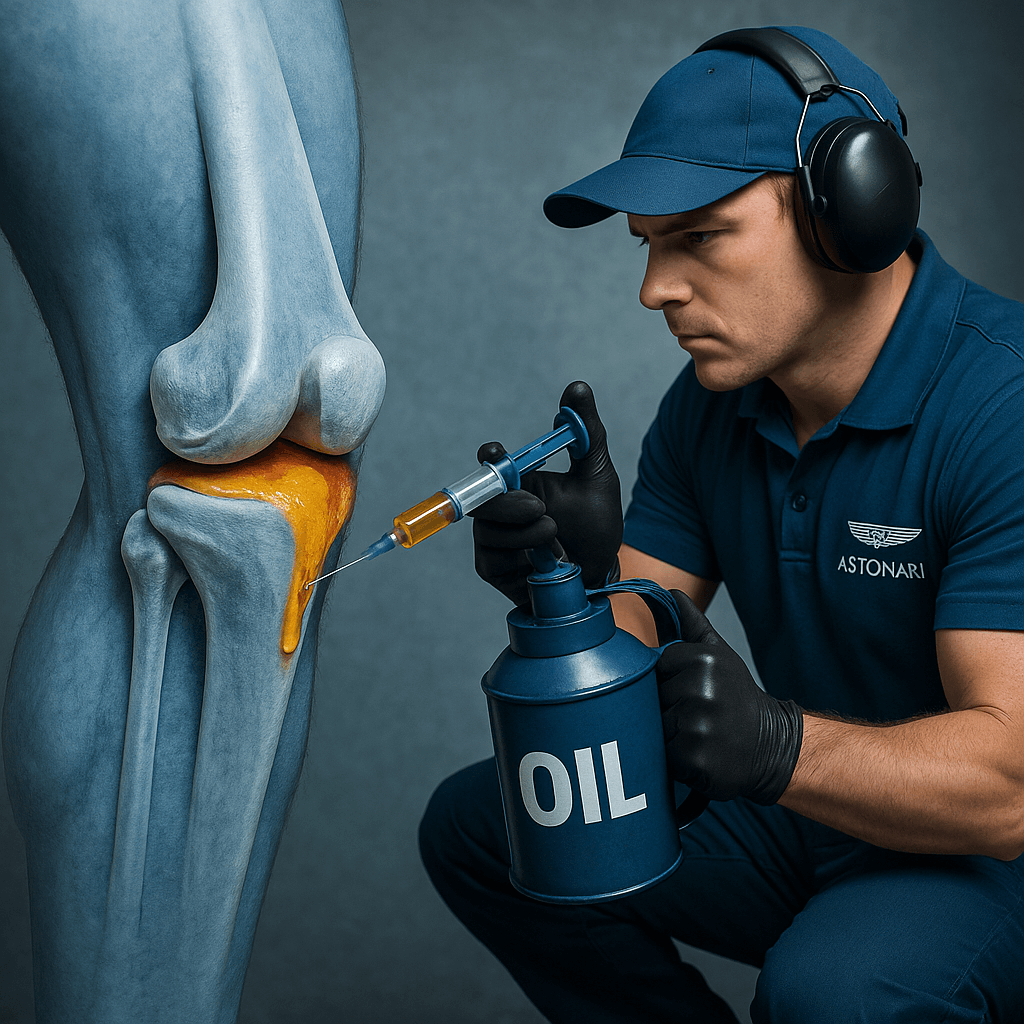Living with Advanced Osteoarthritis
When osteoarthritis progresses, the smooth cartilage that cushions the joints wears away. Without this protection, bones rub directly against each other, causing severe pain, stiffness, and loss of mobility.
In early stages, treatments like exercise, physiotherapy, or injections can help. But in advanced osteoarthritis, the most common option has been joint replacement surgery.
Now, new research brings hope for the future: scientists have developed a way to lubricate the bone itself.
How Does It Work?
A team of researchers at Cornell University created a synthetic polymer — a special molecule that works like a smart lubricant.
One part of the molecule attaches firmly to bone.
The other part forms a soft “brush” that creates a slippery cushion between surfaces.
This design allows bone to glide more smoothly, similar to the way healthy cartilage normally works.
What Did the Study Show?
In laboratory tests, the new lubricant:
Made bone surfaces even smoother than cartilage in some cases.
Reduced friction to levels very close to natural cartilage.
This is the first time that lubrication of bone itself has been shown to work effectively.
What This Could Mean for Patients
If this research translates into clinical treatments, patients with severe osteoarthritis may one day benefit from:
Less pain from bone-on-bone contact.
Improved mobility and function.
The possibility of delaying or even avoiding joint replacement surgery.
In the future, doctors may also combine this synthetic lubricant with regenerative medicine to repair cartilage, giving patients stronger, longer-lasting results.
Looking Ahead
As a specialist in complex arthroscopy and regenerative medicine, I believe these findings open a new horizon. Imagine a procedure where:
We prepare the joint through arthroscopy.
Apply the synthetic lubricant to protect bone surfaces.
Combine it with regenerative treatments to encourage new cartilage growth.
This could mean more years with your natural joint and fewer prosthetic replacements.
Final Thoughts
This new discovery is not yet available for patients, but it shows that science is moving closer to solutions that don’t just replace joints — they may actually help us restore and protect them.
Reference
Sun Z, Bonassar LJ, Putnam D. Synthetic Lubrication of Bone Interfaces for Late-Stage Osteoarthritis Treatment. Langmuir. 2025 Aug 7. doi:10.1021/acs.langmuir.5c02416.
